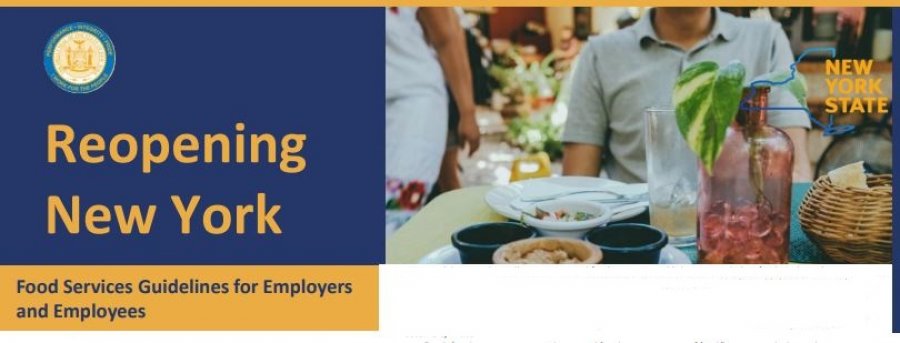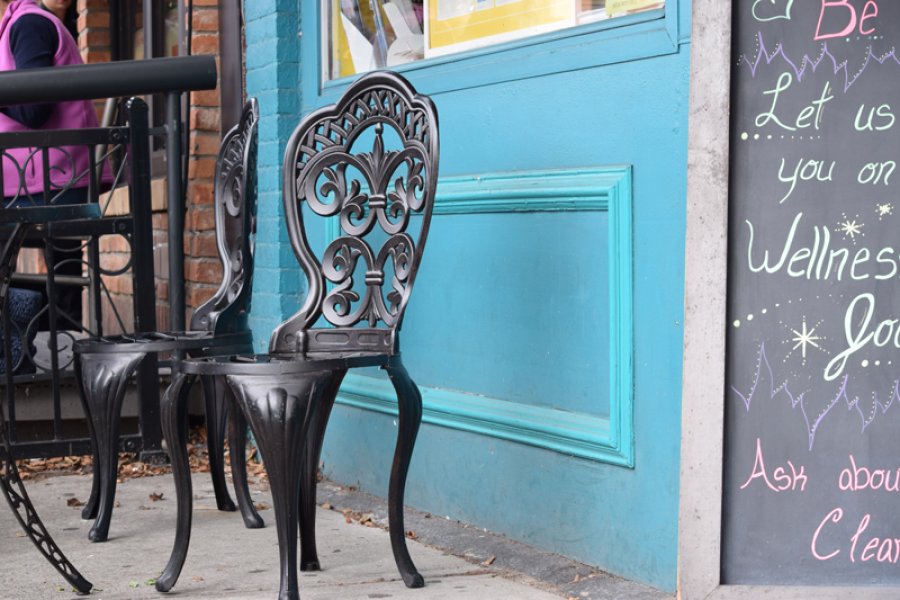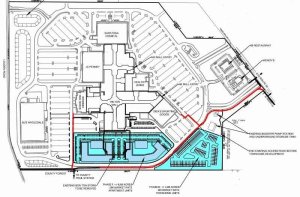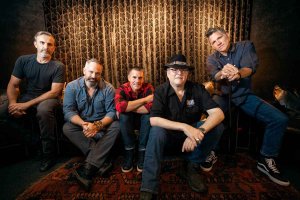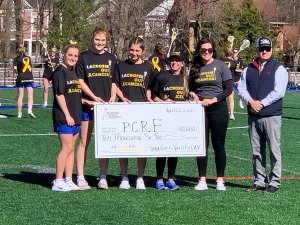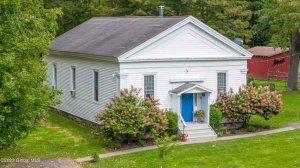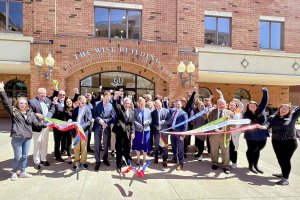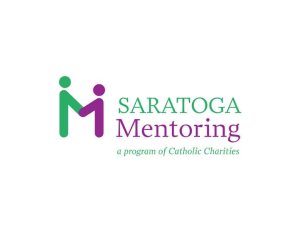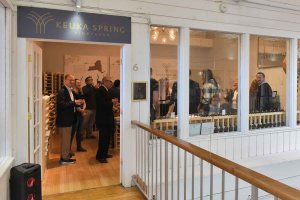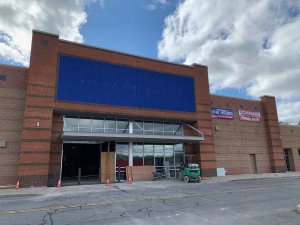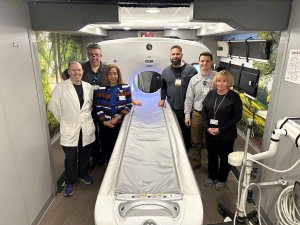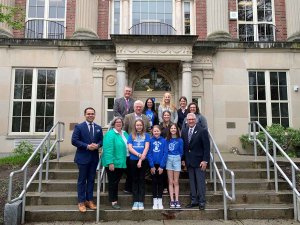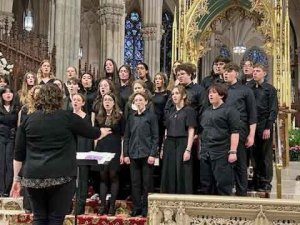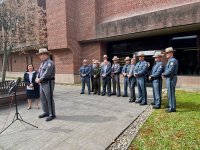Skidmore College Announces Plan for Fall 2020
SARATOGA SPRINGS - Skidmore College on July 2 announced their fall semester plan that covers everything from Academic Instruction and Residential Life to Campus Life and Engagement.
The plan – introduced as an ongoing work-in-progress - will continue to be refined, Skidmore College President Marc C. Conner said in a statement. Conner - the eighth president of the college – began his term July 1.
The fall semester will begin two weeks early, on Aug. 24, and conclude on Friday, Nov. 20, prior to Thanksgiving week. Students will finish exams and final projects remotely. There will not be any break during the fall term.
All major public events that would bring large numbers of visitors to campus, such as Celebration Weekend, Homecoming and the Presidential Inauguration, will be shifted to virtual experiences.
“As we have been emphasizing for many weeks, our primary commitment in all of these efforts is the health and safety of our entire community — students, staff, faculty and the surrounding Saratoga Springs community of which we are a part,” Conner said. “Our second commitment is to make possible the Skidmore education as we all value it: high-quality, fully engaged teaching and learning, performed with creativity and skill by superb faculty and staff.”
All students must complete a daily symptom check for seven days prior to their return to campus. and there are plans to have all employees undergo a COVID-19 test prior to returning to work.
Regarding academic instruction: a certain percentage of fall courses will be offered in a remote mode. It is anticipated most classes — estimated to be approximately two-thirds of the classes — will likely be some form of in-person instruction. The exact mode for each class will be determined in the coming weeks and this information will be made available to students by late July.
“Many of the events of typical college social life simply cannot occur this fall. That must be understood by all of us. We will employ technology to make possible group events such as speakers, performances and other programs and events so we can still have communal events, even if they are not in person in the same way,” Conner said.
Academic spaces, classrooms, labs and performance spaces will be reconfigured to accommodate health guidelines. Classrooms will include social distancing spacing, personal protective equipment, including plexiglass where appropriate, enhanced cleaning protocols and more. Outdoor classroom options are additionally being explored.
Residential space for students will allow for appropriate social distancing, maintain standards of health and safety, and prevent too much social density in residential spaces. No more than two students will be housed per room for the academic year. There will be no triple-occupancy rooms. Apartment spaces, which consist of single rooms only, will operating at full occupancy.
“In order to bring all, or nearly all, of our student body to Skidmore, we are arranging for housing in local hotels, consisting of both double and single rooms, comparable to a residence hall living arrangement,” Conner said. Shuttle buses and parking will be available to students living in these hotels.
Seating, layout and foot-traffic flow in Murray-Aikins Dining Hall will be modified to provide for necessary social distancing. Outside seating will be increased with the use of tents. Hours for all dining locations will be slightly modified to allow for cleaning between meals.
To reduce personal contact and limit large group gatherings, students should expect an increased offering of online events, virtual community-building and outdoor activities.
The athletics and fitness schedule will be modified, and fan attendance will either be significantly reduced or eliminated as an in-person experience.
Facemasks will always be required in all public settings, regardless of distancing or room capacity. There will be different requirements for residential spaces. Each student, upon arrival, will receive a starter kit of personal protective equipment (PPE) consisting of two Skidmore reusable facemasks and a bottle of hand sanitizer. Similarly, each employee will receive the PPE starter kit upon returning to campus. Hand sanitizer stations will be set up throughout campus. Safe passage routes, signage and directions will be created to minimize density. Daily and deep-cleaning protocols will be established throughout the campus.
Gatherings on campus will be limited to no more than what health officials’ safety guidelines recommend, always with appropriate distancing and masking. The guidelines are likely to change during the semester.
Testing requirements will be implemented in correspondence with CDC and New York state guidelines. Several testing timelines are under consideration, which could include requiring testing prior to arrival for students, testing on arrival to campus and subsequent surveillance testing. All students will be required to self-monitor, and students with symptoms suggestive of COVID-19 will be tested at Skidmore Health Services. More details on the testing protocols in the weeks to come as more information becomes available.
Some residential spaces will be reserved for on-campus students who require quarantine and isolation. Students living in off-campus housing who are in isolation or quarantine will have daily contact with Saratoga County Public Health to assess their needs. Skidmore staff will provide assistance to students to help them keep up with their coursework, and faculty will help students continue to meet course requirements while in isolation or quarantine.
Students and employees will be expected to complete a daily symptom screen that will ask them questions regarding COVID-19 symptoms.
“It is abundantly clear that this will be a fall semester unlike any other. There are deep disappointments in this, of course, as we will all miss some of the treasured events and practices to which we have long been accustomed. But the heart and soul of the Skidmore College experience will remain intact, and in many ways, our creative approach to the semester will provide experiences that will be equally, if not more, fulfilling,” Conner said. “This is a special time of challenge, and I am confident that our entire Skidmore community is equal to this challenge. Together we will get to the other side of this challenge, and we will look back with pride on how we conducted ourselves as a dedicated community.”
For details regarding the Skidmore College plan go to: https://www.skidmore.edu/fall-planning/index.php.
New York Travel Advisory: Visitors from Florida, Texas Must Quarantine for 14 Days
ALBANY — A tri-state travel advisory affecting travelers coming to New York, New Jersey and Connecticut went into effect at midnight on June 24.
The advisory – announced jointly by NY Gov. Andrew M. Cuomo, New Jersey Gov. Phil Murphy and Connecticut Gov. Ned Lamont stipulates that individuals traveling from states with significant community spread of COVID-19 quarantine for a 14-day period, from the time of last contact within the identified state.
The quarantine applies to any person arriving from a state with a positive test rate higher than 10 per 100,000 residents over a 7-day rolling average or a state with a 10% or higher positivity rate over a 7-day rolling average. When the advisory was announced, on Wednesday, June 24, those states above the infection rate were: states above the infection rate are: Alabama, Arkansas, Arizona, Florida, North and South Carolina, Washington, Utah, and Texas.
The tri-state measure will use uniform parameters and messaging on highways, airports, websites and social media across the three states. The three states will also ask hotels to communicate the 14-day quarantine to guests who have traveled from one of the impacted states. Those found violating the quarantine can be subject to judicial order and fines, Gov. Cuomo said.
“Two thousand dollars for the first violation, $5,000 for the second, up to $10,000 if you cause harm,” the governor said.
Guidelines for Phase Four Reopening, which is currently slated for the greater Capital Region July 1 have been posted on Gov. Cuomo’s website at: forward.ny.gov/phase-four-industries.
Those categorized industries are: Higher Education; Low-Risk Outdoor Arts & Entertainment; Low-Risk Indoor Arts & Entertainment, and Media Production.
SPAC 2020: Plans Untethered
SARATOGA SPRINGS — The amphitheater is quiet with a passive unease. Neither bluster nor discord rise from these seats, and a disturbing tranquility hovers atop the stage. These first days of summer in the summer of COVID, the grounds are vacant of any human. The earth takes deep breaths and exhales a hissing of summer lawns.
“On March 16, our whole staff of 25 began working from home and have not been back to the office,” says Elizabeth Sobol, president and CEO of the Saratoga Performing Arts Center. “Our magnificent amphitheater – normally a frenetic hive of activity – is now shuttered. Who or what you might ask is SPAC in a summer that seems to have gone silent? And who are we in a world of hurt that longs for healing?”
Deep behind the scenes, however, plans are underway that point to renewal. This place of creativity is getting creative. “Untethered,” Sobol calls it.
“Un-tethered. We are no longer tethered to this beast that is SPAC in the summer. It’s forcing us to be open and creative and kind of invent stuff on the spot and figure out what we can do,” Sobol says.
“We’ve been thinking about ways we can help the community of musicians, the community of wellness practitioners. That’s where we really started focusing our energy: How can we use the SPAC grounds and the new spaces to allow the community to do the things here that they really need to do and where there’s not any other place to do it?”
SPAC has been working on staging in-person gathering on its grounds this summer, which is slated to potentially include wellness activities in partnership with COESA, art classes, small-scale musical events, cinematic performance screenings and other types of gatherings, all in adherence with guidelines from the state, and all on the sprawling SPAC lawns.
“We’re putting together detailed procedures and protocols which include socially distanced parking, contact-less registration and ticketing.” Spots to be inhabited by humans will be separated and marked off in chalk, attendance will be limited, and one single-use sanitized bathroom will be open.
The organization is also set to unveil The Pines at SPAC - a new construction project which should be completed by the second week of July. The 4,000 square foot indoor/outdoor, year-round education and community events space features a pavilion and a terrace where some small gathering events may take place.
“The challenge for us: When the acronym ‘SPAC’ is uttered people imagine thousands and thousands of people and the ‘COVID Shudder’ goes through them; what we’re trying to do is: don’t think of us as SPAC – the home of Live Nation and presenter of the New York City Ballet and Philadelphia Orchestra in the amphitheater. Think of us as a home in the park and all the acreage of open space that we have where people can gather safely. And we have this incredible team who has created this fantastic protocol,” says Sobol, who arrived at SPAC in the fall of 2016.
There are of course financial ramifications. SPAC is a 501(c)3 charitable organization with an annual operating budget of about $10 million. While capital funds for infrastructure projects have come via Parks and the State, there is no similarly sourced financial support for operating the organization.
To normally meet that $10 million operating budget, about $5 million in revenue is generated from ticket sales, rent paid by promoter Live Nation which stages the summer pop concerts, and some other miscellaneous sources. The other $5 million must largely be raised through SPAC memberships, charitable donations and corporate underwriting.
“The only thing that will sustain us and allow us to operate in 2021 is if we have people support now, because you can’t shut SPAC down until the end of the year and think you’re going to have a summer next year. The work we do, the programming itself takes a year to do a season at SPAC. We just don’t know what next year is going to look like. Are we still going to be in social distancing mode - in which case we’ll only be able to (for example) sell 1,200 seats in our 5,200-seat amphitheater? Will the ballet be able to perform? Will they be able to put an orchestra in the pit? There are just so many questions,” Sobol says.
“And there is our education program – we went from 5,000 to more than 50,000 kids a year throughout the Capital Region. That’s a huge impact we’ve had on the community and the children and creating that next generation of kids who care about the arts. That’s critical work we’re doing 24/7, 365 days-a-year. If we don’t have the support that all goes away and the programming for next year goes away.” That program worked with more than 120 local schools and non-profit organizations to present more than 400 unique classes, events, performances, and presentations in 2019 alone.
The Capital Region is scheduled for Phase 4 of its reopening plan on July 1. SPAC is anticipated to announce its summer events shortly thereafter.
“To those who may ask why art is important during times like these, when even basic survival may be in question, remember this: art is not entertainment. Art is not a beautiful pastime. Art is a profound and essential expression of the human soul.”
This weekend, in lieu of the staging of the Freihofer’s Saratoga Jazz Festival, a virtual jazz festival will take place on June 26, 27 and 28, featuring both national and local artists, produced in partnership with Caffe Lena. SPAC has also created a virtual Learning Library featuring artists on its website. For more information, go to: SPAC.org.
NYRA Announces Stakes Schedule for Summer Meet At The Spa – Travers on Aug. 8
SARATOGA SPRINGS - The 2020 summer meet at historic Saratoga Race Course will feature 71 stakes worth $14.45 million, encompassing 39 graded stakes and 18 Grade 1s - from Thursday, July 16 through Monday, Sept. 7.
"We're thrilled to be racing at Saratoga this summer, and we thank Governor Andrew Cuomo for his support and the support of horsemen who have worked with us to navigate the many challenges," NYRA President and CEO Dave O'Rourke said in a statement. "While this will be anything but a traditional Saratoga season, we hope to provide a semblance of normalcy for both the local community as well as racing fans across the country."
Under current New York state guidelines, Saratoga Race Course will open July 16 without spectators in attendance. The 40-day meet will feature at least one stakes race every live racing day, highlighted by the 151st renewal of the Grade 1, $1 million Runhappy Travers on August 8 and the Grade 1, $750,000 Whitney on August 1, as the anchors of two of the biggest racing days in North America.
After opening weekend, racing will be conducted five days a week, Wednesdays through Sundays.
Whitney Day, set for Saturday, Aug.1, will feature three Grade 1 events, led by the historic Whitney, a handicap at 1 1/8 miles with an automatic berth to the Breeders' Cup Classic on November 7 at Keeneland on the line.
The card is bolstered by the Grade 1, $500,000 Personal Ensign, a "Win and You're In" qualifier for the Breeders' Cup Distaff in November; and the Grade 1, $300,000 H. Allen Jerkens Memorial presented by Runhappy for 3-year-olds sprinting seven furlongs.
The stakes-laden card also includes the Grade 2, $250,000 Bowling Green for 4-year-olds and up on the turf and the $200,000 Caress, a 5 ½-furlong turf sprint for older fillies and mares.
The Runhappy Travers, traditionally contested at the end of August, will be held this year on Aug. 8 to properly account for the schedule adjustments and overall calendar for 3-year-olds in training due to the health and safety measures instituted to mitigate risk and combat the spread of COVID-19.
The "Mid-Summer Derby" will still be contested at 1 1/4 miles for the country's most talented 3-year-olds and is one of three Grade 1s on the day, joining the $300,000 Ballerina for fillies and mares 3-years-old and up going seven furlongs in a "Win and You're In" qualifier for the Breeders' Cup Filly and Mare Sprint.
A pair of stakes for sophomore state-breds originally scheduled at Aqueduct Racetrack, the NYSSS Times Square and NYSSS Park Avenue, will now be contested at Saratoga on Aug. 27 and Sept. 3 respectively, both offering a purse of $100,000 for the 6 1/2-furlong main-track sprints.
City Center Parking Structure Still on Track for Fall 2020
SARATOGA SPRINGS — Work continues on the development of a multi-story parking garage that will connect conference attendees and others with the Saratoga Springs City Center.
Plans call for the lower level of the structure to be completed and available for use during the summer, with all levels of the structure completed by the fall.
“The goal is as soon as possible,” City Center Executive Director Ryan McMahon said this week, as a 400 ton crane tended to the business at hand atop the lot where the structure is being developed.
The COVID-19 pandemic slightly affected the progress of the development.
“We’ll probably open now in early November instead of early October,” McMahon said.
The City Center itself, like most all other venues across the country where large groups of people gather, has canceled events during the pandemic - although the good news is that most of those events have been rescheduled to take place at a later time, McMahon said. A handful of previously scheduled events slated to take place during the summer are still being held in the hopeful anticipation that they may be able to take place.
The greater Capital Region –a multi-county area that includes Saratoga – this week entered the third phase of Gov. Andrew Cuomo’s four-phase reopening plan. Should infection, hospitalization and death rates due to COVID-19 remain low, the region is slated to enter Phase 4 on July 1. Phase 4 includes arts, entertainment, and recreation.
Creeping Toward Reopening Phase 3: Indoor Dining, Nails, Spas, Tattoos, Tans & More
SARATOGA SPRINGS — Indoor dining experiences, nail and spa treatments and a variety of other personal care businesses and services may soon reopen to the public.
“Phase three” reopening activities are slated to take place in the region June 17. Eligibility for reopening is determined by health metrics, and as long as regional COVID-19 related infections, hospitalizations and deaths remain low, it is anticipated Gov. Andrew Cuomo may give the Capital Region the green light for “phase 3” early next week.
“We’re not out of the woods, but we are on the other side,” Cuomo said this week. Five regions in the state outside of the Capital Region were given the green light for phase three reopening on June 11.
Gov. Cuomo’s NY Pause order went into effect March 22, and the city of Saratoga Springs and the greater Capital District Region were cleared by the state to begin the phase 1 re-opening of the local economy beginning Wednesday, May 20. Capital Region’s phase two reopening plan went into effect on June 3.
The sector designated as the Capital Region includes eight counties. They are: Albany, Columbia, Greene, Saratoga, Schenectady, Rensselaer, Warren, and Washington counties.
There are four reopening phases in all, and an up-to 14-day incubation period between phases to ensure that infection rates and hospitalizations are maintained at a manageable level. Phase three is slated for June 17 and phase four, which focuses on Arts/ Entertainment / Recreation, and Education, including libraries, will potentially hit its reopening mark July 1.
Recent actions include the reopening of outdoor dining at restaurants, as well as places of worship - with 25 percent allowable occupancy. Beginning June 26 outdoor graduations of up to 150 people will be allowed. Additionally, the New York State sales tax filing deadline has been extended to June 22.
Social distancing protocols apply throughout all four phases – that is, that people maintain a distance of six feet apart when possible, and face coverings be worn to decrease the potential spread of the virus.
Phase three showcases restaurants and food services establishments reopening their indoor spaces for the seating of customers. Indoor capacity must be limited to no more than 50% of maximum occupancy, exclusive of employees, and all tables with seating for customers must be separated by a minimum of 6 feet in all directions. Wherever distancing is not feasible between tables, physical barriers – at least five feet in height - must be enacted between the tables.
Additionally, patrons must wear face coverings at all times, except while seated, provided that the patron is over the age of 2 and able to medically tolerate such covering. There is a maximum of 10 people per table.
Also included in phase three: non-hair-related personal care businesses and services. This includes tattoo and piercing facilities, appearance enhancement practitioners, massage therapy, spas, cosmetology, nail specialty, UV and non-UV tanning, or waxing. Mandatory occupancy restrictions, distancing and mask requirements apply. For more information about the phases of reopening, requirements and gudelines, go to: ny.gov.
Hitting the Streets: Dining's New Outdoor Options
SARATOGA SPRINGS — Summertime in Saratoga may feature new dimensions in the outdoor dining experience. Literally.
In an effort to help downtown businesses increase customer capacity while remaining compliant to COVID-19 restrictions, the city is exploring a variety of possibilities that would allow its merchants to expand their businesses across city sidewalks.
The City Council is expected to address the matter at its Tuesday, June 16 meeting - immediately preceded by a public hearing at 6:55 p.m.
A working draft of a proposal that will be presented to the council is being crafted this week.
“Right now, the draft is basically allowing businesses to use the sidewalk as long as it’s ADA compliant – which is 48 inches for people to walk back and forth,” Accounts Commissioner John Franck said on June 9, one week prior to the meeting. Specifically, the measure would allow restaurants and other establishments to expand their outdoor spaces onto sidewalks, as long as 48 inches of pedestrian walkway is maintained, as per Americans with Disabilities Act regulations.
“We want to see how that affects things. Is that going to move the needle for the restaurants one way or another? Do we need to do more?” said Public Safety Commissioner Robin Dalton.
With summer approaching and some, but not all, state mandated restrictions related to COVID-19 being lifted, the idea of municipalities and businesses seeking creative ways to reopen the economy is a fluid one. Between this week and next week those creative options may change. Another idea being floated involves eliminating one lane of parking on city side streets to expand even greater the usable spaces for businesses.
“A second option would be to look at the side streets, take one lane of parking away from the side streets and put up Jersey barriers between the parking lane and the driving lane,” Commissioner Dalton explained. That move would allow the current parking lane to become a barriered pedestrian walkway, and free existing sidewalks in their entirety for vendors and restaurants to use. Jersey barriers are concrete partitions and are so-named because of their notable use as median barriers in the late 1940s in New Jersey.
Commissioner Franck has been leading the charge for the second option. “I’m hoping and really pushing for the change to also have the ability to add some of the street space – not close streets down – but to put barriers down that would allow more area in front of businesses – especially restaurants and bars – to give you more space for walking area and also in front of your restaurant, bar, or retail,” Franck said.
“It’s evolving, and I don’t know if the votes are there for it, but why not just put a Jersey barrier out there along one side of the street. This isn’t for the next 20 years; later we could go back to business as usual, but the summer’s here – let’s get this done,” he said.
It is not clear whether that second measure may also be part of the June 16 meeting, but a majority of Council members – at least three of five member votes – are required to approve the proposal for it to take effect.
That installation of barriers would be for a temporary period – perhaps only through the summer – but they would stay in place throughout the period of implementation. In other words, they wouldn’t be removed and re-inserted on a daily basis, or in accordance with business hours. And while they would only be placed on certain blocks in the downtown business core – and not on Broadway – their implementation could extend to both the east and west side of the city.
As to which side streets the barriers would specifically be installed needs to be figured out. “It’s not like we’re going to impose it on everyone. The code would be re-written such that if the need is there, it’s something we can do. We want to take logical steps,” Dalton said.
The Public Hearing will begin at 6:55 p.m. Two agenda items later into the meeting address the matter. The chapter amendment may be viewed HERE and a draft of the licensing process may be viewed HERE.
Outdoor Restaurants Get State OK; City Council to Explore Extended Outdoor Seating for Eating, Drinking Establishments in Saratoga Springs
SARATOGA SPRINGS – The City Council will host a Public Hearing June 16 regarding temporarily extending "eating and drinking establishments" onto "auxiliary seating areas" on public property, as a result of necessary spacing precautions during the COVID-19 epidemic.
The measure – which would amend chapter 136 of the City Code – would allow the city to accommodate licensed eating and drinking establishments to provide their services to the public on specific public properties. Those public property locations have not been specified, although is generally assumed Broadway – a state road - is not among them. If approved, the approval process may be conducted through an application process for holders of valid licenses.
As of this week, there is little additional information regarding the matter. The public hearing will begin at 6:55 p.m. on Tuesday, June 16. Since the start of the pandemic, City Council meetings are held via Zoom and are accessible through the city’s website. A State of Emergency currently remains in effect in Saratoga Springs til June 12. Comments may be sent to: This email address is being protected from spambots. You need JavaScript enabled to view it..
On Wednesday, June 3, Gov. Andrew Cuomo announced outdoor dining at restaurants will be permitted beginning June 4 for restaurants in the Capital Region – which includes Saratoga Springs – as well as in the six other regions that have been approved for phase two reopenings. Outdoor tables must be spaced six feet apart, all staff must wear face coverings and customers must also wear face coverings when not seated.
Planning Review This Week for Proposed New 120-Room Hotel on South Broadway
SARATOGA SPRINGS — The owners of the Turf and Spa Motel at 176 South Broadway are scheduled for a site plan review June 11 in front of the city Planning Board with a proposal that replaces the existing two-story, 43-room motel with a 120-room hotel atop the 1.4-acre property. The applicant, Larkin Hospitality, was founded in 1987 and currently operates 10 hotels and inns in Vermont and Massachusetts. The new South Broadway Hotel would also feature an underground parking garage.
Back to Business
Cover Photo: Pam Worth and Alexandra Besso of Spoken Boutique are stronger together.
Gallery: 1. Marianne Barker and Maddy Zanetti, Impressions of Saratoga on Broadway.
2. Lifestyles of Saratoga owner Heidi Owen West and Margie Rotchford.
3. The Pink Paddock on Broadway.
All Photos by SuperSource Media.
SARATOGA SPRINGS — Small business owners opened their doors to in-store customers and hair stylists their salons for the first time in more than two months as part of the Capital Region’s phase two reopening plan on June 3. Outdoor dining returned one day later.
“We opened at 9 o’clock and we already had someone waiting at the door,” said Maddy Zanetti, at Impressions of Saratoga. “We’ve been open the whole time for curbside, delivery and shipping but today is the first time of customers in the store.” A table cradling bottles of hand sanitizer and disposable gloves and masks sat near the entryway door.
“People are thrilled to be out,” added Marianne Barker. “I do think people who are leery are going to stay home for a while yet, but people know we’re pretty careful, we’ve been open about what we’re doing and the steps we’re taking."
Kimberly Burton opened the doors to her Pink Paddock shop at 11 a.m. “It’s been three months. Three very long months,” she said with emphasis, celebrating the 15th year of the Broadway shop that’s been fitted with hand sanitizing stations, plastic protective shields at the register counter and posted to inform customers of in-store capacity regulations. “I think people are anxious to get out of the house, to shop, to try on some new clothes,” she said gesturing toward the dressing rooms, which are disinfected between customer uses.
Phase Two reopening allows for in-store retail sales, hair salons and barbershops, and office-based work, in addition to real estate services, commercial building management, vehicle sales, leases, and rentals, and retail rental, repair, and cleaning. Outdoor dining was added to the list on the afternoon of June 3.
“We’re already booked for the next three weeks,” said Yvette Ruddy, a hairstylist at Remarkable Finish on Broadway, where a digital thermometer rests at the entryway and customer chairs have been placed at a safe distance from one another. The employees have all been tested for the COVID-19 virus before ensuring they could return to work, she said.
An array of state guidelines and restrictions accompany reopening plans for both workforce employees and customers, with presence being limited to no more than 50% of the maximum occupancy for a particular area, as set by the certificate of occupancy. Employers are also recommended to adjust workplace hours to limit in-person presence to necessary staff only, as well as maintaining six feet of separation from others and wearing an acceptable face covering.
"What we have done with this COVID virus is really an amazing accomplishment, and it was all done by the people of this state. They did it, 19 million people did what they never did before. They responded with a level of determination and discipline that I was amazed with frankly," Gov. Andrew Cuomo said this week. "Remember where we were: we had 800 people die in one day. We had the worst situation in the United States of America. At one point we had the worst situation on the globe. And now we're reopening in less than 50 days. We went from an internationally terrible situation to where we’re talking about reopening."
To date, more than 105,000 U.S. residents have died during the past three months due to COVID-19. More than 38 million Americans have filed unemployment claims over the span of nine weeks. Whether the worst has passed or a so-called “second wave” returns - as some in the medical community have suggested – remains an unknown.
“I’m delighted to see our retailers open again. And as we are getting caught up in our reopening details and stores are focusing on their safety plans - and we have riots going on and protests going on, It’s easy to lose track that there still is a virus present in our community,” cautioned Saratoga Springs Public Safety Commissioner Robin Dalton.
In Saratoga County, there have been 495 confirmed cases of COVID-19 this year, 56 specifically being Saratoga Springs residents. Sixteen people have died, and 6 people are currently hospitalized. Approximately 2,500 residents have been isolated or quarantined at some point.
“We all need to keep our eye on the ball here and realize there still is a virus present, it’s still in our community and we need to be really vigilant as we continue these reopening phases, so we can get to phase three, so we can get to phase four and we can get back to some kind of normalcy,” Dalton said.
Gov. Cuomo’s NY Pause order went into effect March 22, and the city of Saratoga Springs and the greater Capital District Region were cleared by the state to begin the phase 1 re-opening of the local economy beginning Wednesday, May 20.
There are four reopening phases in all, and an up-to 14-day incubation period between phases to ensure that infection rates and hospitalizations are maintained at a manageable level. Phase Three – which includes indoor dining at restaurants, is currently slated for its reopening phase June 17; Phase Four, which focuses on Arts/ Entertainment / Recreation, and Education, including libraries, will potentially hit its reopening mark July 1.
On May 28, Cuomo signed an Executive Order authorizing businesses the ability to deny entry to those who do not wear masks or face-coverings. "The store owner has a right to protect themselves (and) the other patrons in that store," he said. A subsequent announcement states summer day camps statewide can open on June 29. A decision on sleep-away camps will be made in the coming weeks.
Malls - specifically any indoor common portions of retail shopping malls with 100,000 or more square feet of retail space available for lease, remain closed. However, stores located within shopping malls, which have their own external entrances open to the public, separate from the general mall entrance may open.
Also remaining closed are: large gathering event and concert venues, gyms, fitness centers, Video lottery and casino gaming facilities, movie theaters - except drive-in theaters - and places of public amusement, such as amusement parks, water parks, children’s play centers, bowling alleys, and other locations where groups of people may gather.




 How to resolve AdBlock issue?
How to resolve AdBlock issue? 

